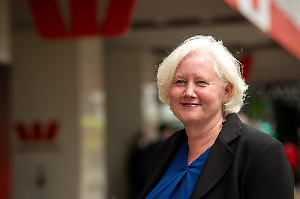
Borrowers signed up for $8.5 billion in new mortgages last month – up 45.2% from $5.8 billion in February and up 40.7% from $6.035 billion March last year, the latest Reserve Bank data show.
In March 2023 mortgage borrowers took out a smidgeon more at $6.036 billion.
A large chunk of the new mortgages were borrowers switching banks. Those numbers rose by 52.5% in a month and nearly 63% compared to March last year.
The share of the value of these new mortgages increased to 24.8% per cent last month, up from 24.4% in February. However, the average value of a change in loan provider mortgage fell by 3.2% over the month.
The total value of lending increased by a whopping 64.8% for investors, who signed up for $1,779 billion, other owner-occupiers 39.7%, who took out $4,924 billion and a lowly 24.5% or $1.670 billion for first home buyers.
First home buyers share of new mortgages has dropped from 22.2% a year ago to 19.7%, although this is up slightly from 19% a month ago.
Investors’ share of new borrowings continues to rise and were up 0.4% to 21% from 20.6% in February. Just a year ago investors share of new mortgages stood at a measly 17.9%.
For other owner occupiers, their share dropped to 56%, down from 58.6% in February. In March last year their share was 58.4%.
A total of 21,915 new mortgages were lent last month, up 34.6% from 16,286 in February and a rise of 34.2% from 16,327 a year ago.
The average new loan value across all borrowers increased to $387,314 this month, up 7.9%
from $359,020 in February. In comparison to March last year, the average loan value has risen 4.8% from $369,620.
New mortgaqges for property purchases increased by 31.5% and that of top ups increased by 29.9% per cent when compared to March last year.
The share of the value of new mortgages for property purchases increased to 60.7%, up from 59.3% in February-25, while the share for top ups dropped to 11.1%, down from 13.3% on the previous month.
Lower longer-term rates not likely
Meanwhile the ASB says in its latest Home Loan Rate Report that significant falls for longer-term interest rates are unlikely, especially with some of the recent global developments, such as tariff wars, pushing inflation expectations higher.
The bank says the fixed terms beyond two years could stay near existing levels or potentially increase.
“The longer-term rates are under a mix of forces, including upward pressure despite the RBNZ being in an easing mode.”




Comments
No comments yet.
Sign In to add your comment